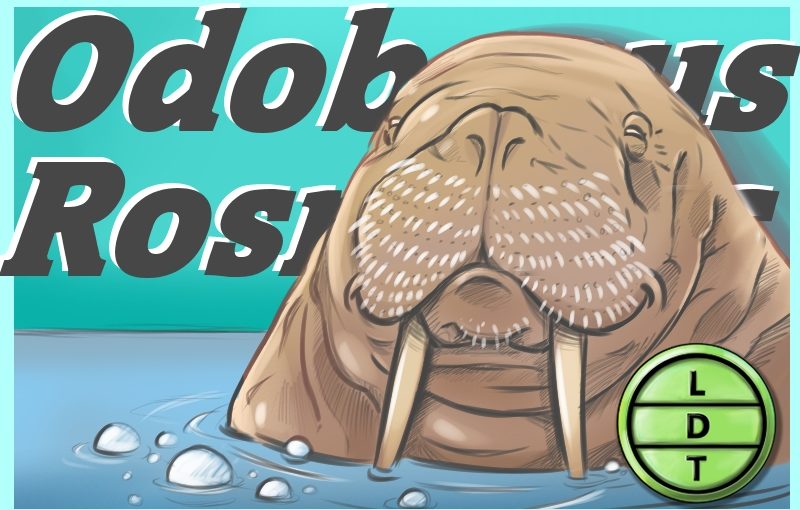“And today we’re talking about a big blubbery boy with wonderful whiskers with which they wade around in the water.”
There may be no harsher environment in the world than arctic. The extreme cold makes it an inhospitable place for most plants and animals. But for a few unique species, it’s an ideal to place live, hunt, and lay around. To call this frozen wasteland home, you need to develop amazing ways to keep warm, and one blubbery behemoth has found the key to thriving in the Great White North. But defying your environment to survive against the odds is how some animal make it in Life, Death, and Taxonomy.
Measure Up!
Length – adult males can weigh 2,000 kg (4,400 lb) – In 2017, one of the largest icebergs in history broke off the Larsen C ice shelf in Antarctica. How many male walruses go into the weight of the iceberg? – Hint: The iceberg is called A-68, and it travels at a speed of a few dozen miles per year. It’s turned toward warmer waters but may last several years before it melts. – Answer: 501,050,596,000
Weight – 2.2 to 3.6 m (7.2 to 11.8 ft) – 9.5 feet – How many walruses go into the length (35 m or 115 ft) of the Draken Harald Hårfagre, a large viking longship? Hint: The ship was built in 2010 and replicates old viking ships. It was funded by a Norwegian Oil company. Answer: 10 Walruses
Fast Facts
- They will sometimes attack and eat large prey like seals and even narwhals.
- They can sleep up to 19 hours on land and stay awake for 3 days at sea.
- They use their lips and tongue to create a vacuum that causes shellfish and clams to rupture.
- The longest tusks mean the highest raked.
- Tusks can grow longer than 3 feet and males with the longest tusks command the most respect.
- Broken tusks may cause you to lose rank.
Major Fact
Walruses have hides so thick it protects them from more than one class of threat.
- In August of 1910, a hunter named Jack Woodson shot and killed a 16 foot walrus. He skinned the animal and its hide alone was 1,000 pounds.
- A walrus’ skin accounts for about 20 percent of its overall body weight.
- For comparison, your skin is about 19 percent of your body weight.
- The skin around the neck and shoulders of a male can be around four inches thick.
- Your thickest skin, in the palm of your hands, is about one tenth of an inch thick.
Similar to people, walruses need to maintain a body temperature around 97.9 degrees fahrenheit.
- But they live in a climate that sees extremely low temperatures.
- Plus, they spend a lot of time in the water, where they lose heat faster than they do on land.
- Still, they have been observed enjoying a swim in water that’s -31 degrees Fahrenheit (-35 degrees Celsius).
- Their skin is generally at least four degrees warmer than the surrounding water.
Most mammals that live in cold areas keep warm with multilayered fur, but walruses are almost completely bald.
- Instead, they keep their heat through a thick layer of fat insulation.
- Under their thick skin, they also have an extremely thick layer of blubber that’s around 15 cm (5.9 in).
- Insulation prevent heat from escaping their body, like a giant winter coat.
- Their blood vessels also constrict to force blood away from their skin and towards their internal organs where heat is needed most.
Walruses thickness protects them from more than just the cold though.
- The walrus only has two natural predators: the orca and the polar bear.
- Still, walruses aren’t typically on the menu for either predator.
- Their long tusks make them a dangerous options, but their thick hides make them difficult to bring down.
- Bears who are desperate for a meal may try to attack an adult walrus, but their hide is difficult to penetrate.
- A BBC video showed a separate male bear get injured by a tusk when trying to kill and eat a walrus.
- Despite their 1200 pounds per square inch bite forces and 2 inch canines, it couldn’t get through the skin for a kill.

